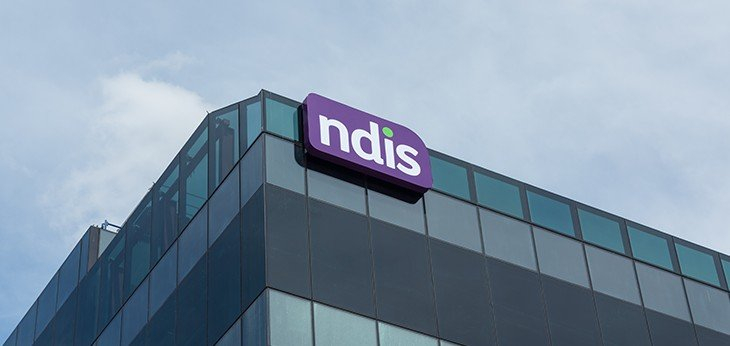The third quarter 2018-19 NDIS report was published this month, you can access the reports here. Please note that this data is now 10 weeks old. SA data starts on page 207 of the report.
Our key takeaways from the latest quarterly report are summarised below:
Rollout
Nationally, the NDIS roll-out is over half way complete (59.1%). The rollout is progressing at approximately the same pace as last quarter (32,486 TQ vs 32,910 LQ). Assuming the current rate of on-boarding to NDIS continues (10,828 per month), it will take until August 2020 to reach full scheme; eight months behind schedule.
In South Australia we’re now over 85% to full NDIS rollout. An extra 2,663 people in SA became active participants during the quarter. There are now a total of 27,487 SA NDIS participants with approved plans (including ECEI). Assuming that the current rate of on-boarding to NDIS continues (887 per month) it will take until July 2019 to reach full scheme.
There are now 20,208 registered providers, a 6% increase for the quarter (the same increase as last quarter):
- 45% are individuals/sole traders and 55% are organisations/companies
- 57% of registered providers are active – 2% up on last quarter
- The highest quarterly growth rate for active providers were:
- 19% for Specialist Disability Accommodation (SDA)
- 15% for innovative community participation
- 14% for exercise physiology and physical wellbeing activities
Participant outcomes
Longitudinal analysis shows improved outcomes for participants who have been in the scheme for two years:
- 9% increase in independence of children aged 0 to 14 years
- 7% increase in assistance with daily living participants aged 15 – 25
- 7% increase in choice and control for participants aged 25 and over
- 11% increase in social and community participation
- 14% increase people aged 19 – 24
- 18% increase for participants with Down syndrome
- 16% increase for participants with Cerebral Palsy
- 13% increase for participants with Intellectual Disability
- 91% of the increase has been via participation in a group for people with a disability.
Plan Utilisation
Plan utilisation was at its highest for participants on their fifth (or more) plan at 74%, compared to an utilisation rate of 48% for participants on their first plan.
There are still significantly fewer people utilising their support in remote and very remote areas. With 55% less utilisation of supports in very remote areas compared to major cities.
Participant Choice & Control
Nationally the total proportion of people in all periods (not just this quarter) who are not agency managed is more than those who are agency managed, reaching 53%. In SA, the proportion also increased, to 51% from 46%. Only 41% of people approved this quarter were Agency managed both nationally and in SA.
Nationally, the percentage of people who are self-managed (fully or partly) increased in this quarter compared to last quarter to 29% from 26%, although in SA for the quarter it went down to 20% from 19%
Nationally the percentage of people who are plan-managed increased this quarter to 31% compared to from 27% last quarter. In SA it also increased in the quarter to 38% from 30%
Nationally the percentage of people with support coordination this quarter was 41% which is higher than the total number of plans with support coordination (40%). In SA it increased this quarter to 41% from 37% last quarter, which is closer, but is not enough to increase the overall percentage of plans above 38%, 2% lower than nationally.
Participates will now get a single point of contact. The contact will be listed in each participant’s plan document and in the myplace participant portal.
Quality of Planning
The quality of NDIS planning in SA is significantly lagging behind NSW (the biggest NDIS market), based on participant feedback about their level of dissatisfaction with the planning process.
SA ranked below NSW on all eight dissatisfaction measures. 3% of participants in SA said that the planner didn’t listen to them, whilst this is better than last quarter (down 2%), it is higher than in NSW (1%). 10% (up from 9% last quarter) of participants said they didn’t agree that plan would make their life better in SA, compared to only 2% in NSW.
Four of the eight dissatisfaction measures are lower in SA compared to the last quarter (highlighted in green), two areas have got worse (highlighted in red) with the number of people thinking the planner ‘knows what I can do well’ increasing to 13% from 9%; and ‘I think my plan will make my life better’ increasing to 10% from 9%. NSW approved across all dissatisfaction measures this quarter.
In the second half of 2018 the number of Planners increased by almost 25% to 1,764.
Complex Support Needs Pathway
The Complex Support Needs Pathway is now underway in all states (expect for WA, Canning, where it commences in July). It provides specialised support for people with disability that experience extraordinary complex support needs, and who have a greater need for coordination of multiple services. This may include voluntary or involuntary involvement in other government service systems (such as justice systems, child protection, and/or mental health programs) and transitional supports for returning to the community, for example, exiting incarceration or an acute rehabilitation environment. More information can be found on pages 39-40 of the report
A pilot to improve outcomes for patients / NDIS participants being discharged from hospital commenced in SA on 1 April 2019. The Framework will be tested and evaluated in a six month pilot commencing on 1 April 2019, with the intent to implement a nationally consistent approach for hospital discharge in all jurisdictions. The Framework includes scope, roles and responsibilities, improved processes, and key performance indicators focused on improving timeliness and minimising delays in the discharge process.






